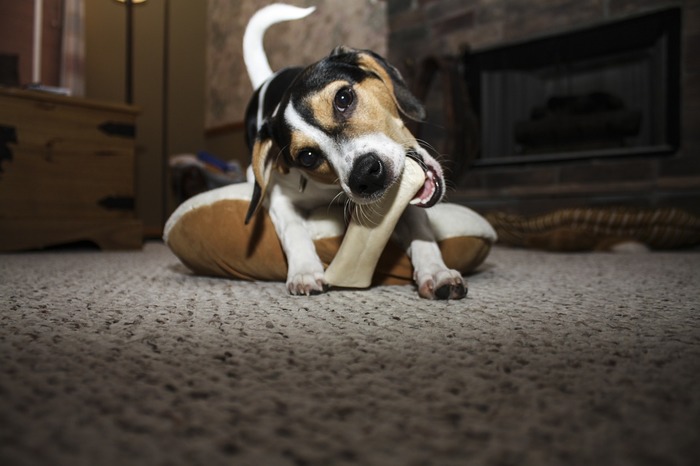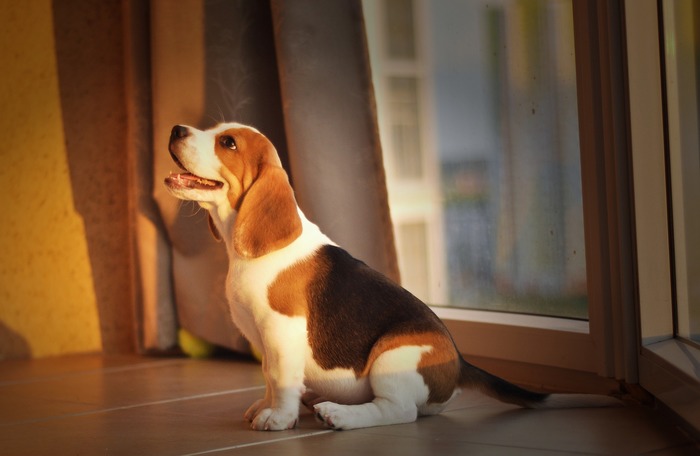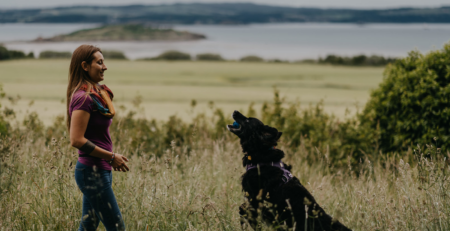Separation Training for puppies
admin2021-07-22T05:10:38+00:00Like pretty much anything separation anxiety related, there’s some seriously mixed advice out there when it comes to separation training for puppies.
Sadly, one of the most prolific pieces of advice still given out by breeders is to leave your new puppy as soon as possible. “The sooner they get used to it, the better” is the thinking, and yet the reality couldn’t be further from the truth!
When to start separation training your puppy
The right time to start training your puppy to spend time alone has little to do with their age, or how many days/ weeks/ months you’ve had them and everything to do with your puppy as an individual.
Is your puppy outgoing or shy? Did they come from a big litter and have lots of room to roam and explore, or was their world quite small until they met you? Are they precocious and happy to venture away from you to explore or are they glued to your side night and day?
There is no right and wrong here, it is all about observing your puppy, understanding how they see the world and its challenges, and planning your training to support them appropriately.
If your puppy still needs to be near you to feel safe, the worst thing you can do is push them too hard or too fast for independence. Having a clingy puppy, or a puppy that wants to be with you all the time doesn’t mean you are destined to have a dog with separation anxiety. It does however mean you need to choose your training route thoughtfully.

Before independence, comes security
The best thing you can do in the first few days and weeks of your relationship with your new dog is to help them feel 100% safe and secure. From these beginnings, you can encourage your pup to find their confidence and independence. Pull the rug out too early and they are absolutely justified in feeling mistrustful, worried and insecure.
Night-time is particularly scary, so sleep next to your pup or allow them to sleep near you. No one gave their dog separation anxiety from sleeping near them (or letting them sleep in the human bed). Dogs are social animals and part of being social is finding safety in numbers. You can progress them to sleeping elsewhere later, to start with though, try to figure out a compromise that will allow your puppy to feel safe.
It can also be really valuable to send time socialising your puppy with other humans so they don’t feel like you are the only person who can meet their needs for food, fun and access to things they value.
How to start separation training your puppy
Assuming your puppy has never been separated from you, it is best start with super short, easy and fun mini-absences. For example:
- You step out of sight behind a piece of furniture, and just as your pup pauses to wonder where you went, you reappear! Repeat this behind different pieces of furniture, behind doors that are ajar or through doorways. Only half a second or so, then reappear. You are teaching your puppy the basics of how absences work: “I go, I come back, and everything is fine in between”.
- Stay put, but set up something fun and exciting for your puppy to explore that is slightly further away than they would normally venture.
Enrichment feeders are great here – stuff a kong and tie it to a chair leg or pop a snuffle mat just in the next room to help your puppy feel confident separating him/herself from you. You are teaching your puppy that they can meet their own needs by venturing off – good things aren’t contingent upon you delivering them or being nearby! Do this every day, and vary the enrichment to keep it stimulating and fun!
- When doors close, make snacks happen! Scatter a small handful of kibble/ treats on the floor next to the door before walking through and closing it after you. Open immediately while your puppy is still eating. Repeat lots, gradually increasing the amount of time you leave the door closed for (no more than a few seconds though – we want to keep the experience short and sweet for maximum impact!).
By introducing this game, you are teaching your puppy that a closed door doesn’t mean they LOSE something, it means something GOOD happens. Food is a primary reinforcer (we are programmed to find it rewarding), so by associating food with the door closing, you are helping ensure that barriers aren’t a bad thing. Practice with different doors or even with baby gates/ pen door if you use these too. Bonus point for setting up a pet cam to watch how your pup reacts when you’re on the other side of the door (this will help immeasurably as you progress training!).

2 seconds can become 2 hours
Once you have worked on your pup’s confidence and introduced very short absences, you must then start the trickier work of more formal separation training. This is where you will build up those few seconds to more significant periods of time.
If your puppy has been left previously and reacted badly, I would strongly advise you seek the guidance of a clinical or veterinary behaviourist to assist in this process. A separation anxiety specialist will be able to guide your training more precisely and advise on whether meds will help get your puppy back on track.
If you are simply working on building things up, just remember to break down the different aspects and help your pup learn to deal with the ones they find challenging. Work gradually, don’t rush (this is the hard bit – we’re all prone to push and cut corners), and whenever you see your pup struggle, make it easier for them so they can have a good experience next time.
If we work collaboratively and listen to what the dog is telling us, there is no reason that 2 seconds can’t become 2 hours of calm, home alone time. I know I have seen it happen!


